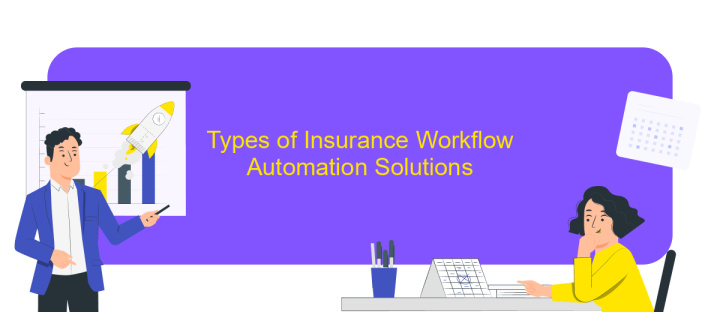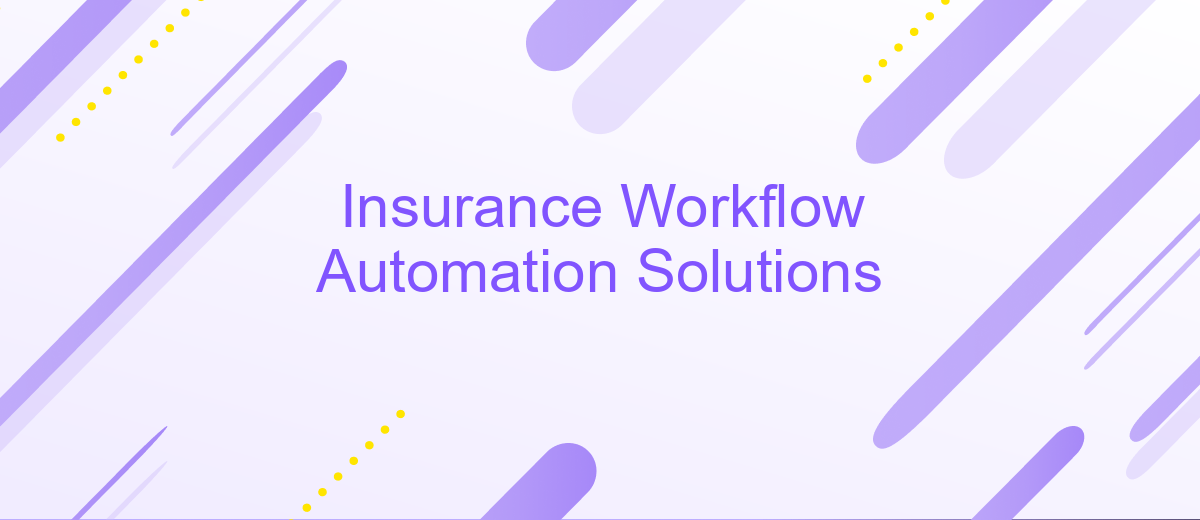Insurance Workflow Automation Solutions
In today's fast-paced insurance industry, efficiency and accuracy are paramount. Insurance Workflow Automation Solutions offer a transformative approach to streamline operations, reduce manual errors, and enhance customer satisfaction. By integrating advanced technologies, these solutions enable insurers to automate routine tasks, optimize resource allocation, and focus on delivering superior service. Discover how automation can revolutionize your insurance processes and drive business growth.
Introduction
In today's fast-paced insurance industry, the need for efficient workflow automation solutions has never been greater. By automating repetitive tasks and streamlining processes, companies can significantly reduce operational costs, improve accuracy, and enhance customer satisfaction. This transformation is not only about adopting new technologies but also about integrating existing systems to work harmoniously together.
- Reduction in manual errors
- Faster claim processing
- Improved customer service
- Cost savings
- Enhanced data security
One of the key aspects of successful workflow automation is seamless integration of various software and tools. Services like ApiX-Drive make it easier to connect disparate systems, allowing for smooth data flow and communication. By leveraging such integration platforms, insurance companies can ensure that their automation efforts are both effective and scalable, ultimately leading to a more agile and responsive business environment.
Benefits of Insurance Workflow Automation Solutions

Insurance workflow automation solutions offer numerous benefits that significantly enhance operational efficiency. By automating repetitive tasks, insurers can reduce human error, streamline processes, and improve overall productivity. This leads to faster claim processing times, which in turn enhances customer satisfaction. Additionally, automation allows employees to focus on more complex and value-added tasks, further driving operational excellence.
Another notable advantage is the seamless integration of various systems and data sources. Tools like ApiX-Drive facilitate the connection between different software applications, enabling smooth data flow and real-time updates. This integration ensures that all stakeholders have access to accurate and up-to-date information, which is crucial for making informed decisions. Moreover, automation solutions help in regulatory compliance by maintaining accurate records and generating timely reports, thereby reducing the risk of non-compliance and associated penalties.
Types of Insurance Workflow Automation Solutions

Insurance workflow automation solutions streamline various processes within the insurance industry, enhancing efficiency and reducing manual errors. These solutions can be categorized into several types based on their functionality and application.
- Claims Processing Automation: This type automates the claims submission, evaluation, and approval process, ensuring faster settlements and improved customer satisfaction.
- Policy Management Automation: Automates the creation, updating, and renewal of insurance policies, reducing administrative workload and ensuring accuracy.
- Underwriting Automation: Utilizes algorithms and data analysis to assess risk and determine coverage eligibility, speeding up the underwriting process.
- Customer Service Automation: Implements chatbots and automated response systems to handle customer inquiries and provide support, improving response times.
- Integration Automation: Platforms like ApiX-Drive facilitate seamless integration between various insurance software and third-party applications, ensuring smooth data flow and operational efficiency.
By leveraging these types of automation solutions, insurance companies can optimize their workflows, reduce operational costs, and provide better service to their clients. Each type addresses specific aspects of the insurance process, contributing to a more streamlined and efficient operation overall.
Implementation Strategies for Insurance Workflow Automation Solutions

Implementing insurance workflow automation solutions requires a strategic approach to ensure seamless integration and optimization. Start by conducting a thorough assessment of existing processes to identify bottlenecks and areas for improvement. This initial analysis will help in selecting the right automation tools that align with your business objectives.
Next, it is crucial to choose a reliable automation platform that supports various integrations. ApiX-Drive, for instance, offers extensive integration capabilities, enabling seamless data flow between different systems. This ensures that all your insurance processes are interconnected, enhancing efficiency and reducing manual errors.
- Conduct a comprehensive process assessment
- Select the right automation tools
- Leverage integration platforms like ApiX-Drive
- Train staff on new systems and processes
- Monitor and optimize workflows regularly
Finally, continuous monitoring and optimization are essential to maintain the efficiency of automated workflows. Regularly review performance metrics and gather feedback from users to make necessary adjustments. By following these strategies, insurance companies can achieve significant improvements in operational efficiency and customer satisfaction.
Conclusion
Insurance Workflow Automation Solutions offer a transformative impact on the insurance industry, enhancing efficiency, accuracy, and customer satisfaction. By automating repetitive tasks and streamlining complex processes, insurance companies can focus more on strategic decision-making and customer engagement. This shift not only reduces operational costs but also accelerates the time-to-market for new insurance products and services.
Moreover, integrating these automation solutions with existing systems becomes seamless with platforms like ApiX-Drive. ApiX-Drive facilitates smooth data flow between various applications, ensuring that all parts of the workflow are synchronized and up-to-date. This integration capability empowers insurance firms to harness the full potential of automation, leading to a more agile and responsive business model. Ultimately, embracing workflow automation is essential for staying competitive in today's fast-paced insurance landscape.
FAQ
What is insurance workflow automation?
How can automation benefit insurance companies?
What types of tasks can be automated in insurance workflows?
How do you integrate automation tools into existing insurance systems?
What should be considered when implementing insurance workflow automation?
Time is the most valuable resource for business today. Almost half of it is wasted on routine tasks. Your employees are constantly forced to perform monotonous tasks that are difficult to classify as important and specialized. You can leave everything as it is by hiring additional employees, or you can automate most of the business processes using the ApiX-Drive online connector to get rid of unnecessary time and money expenses once and for all. The choice is yours!

